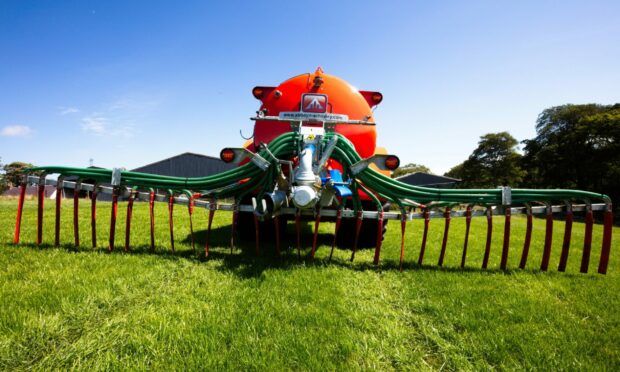Change has been a long-held watchword when looking at the need to build a positive and sustainable future for Scottish farming over the next decade and beyond.
Whilst there remains an urgent need for farming businesses to learn what will replace the Common Agricultural Policy, we are at least seeing some change in the offing as the sector works to improve its environmental footprint.
Transformation
Two announcements from the Scottish Government have shown movement, with the whole of the current year’s agriculture transformation fund of £5million being made available for farm businesses, including agricultural contractors, to invest in capital items to improve slurry management (including covers) in order to reduce emissions and impacts on water quality.
This was followed at the start of March by initial details of the national test programme (NTP), designed to follow a twin track approach of enhancing environmental awareness and knowledge while establishing improved tools to measure performance as part of future public support.
Whilst these are incremental steps rather than the “big ticket” policies we are waiting for, it remains important for the sector to engage and consider how businesses can access both initiatives.
A scheme similar to the agriculture transformation fund was first proposed by the Climate Emergency Response Group (CERG) in 2019, where Scottish Land and Estates represents the land-based sector, as we felt it was vital to overcome barriers to change, most notably cashflow and high capital costs.
Detail
It is important businesses look at the detail of the scheme once available and leave themselves sufficient time to apply, especially as we move into spring.
We expect there will be some conditionality when claiming for the capital items, and it is likely businesses will have to complete a carbon audit and have a nutrient management plan in place.
The NTP was already known about by the sector but the government’s announcement did at least confirm it would get under way soon using the twin track approach outlined above.
It was broadly what Scottish Land and Estates has been calling for, but there will need to be additional details soon, particularly on track 2, so farming businesses can take the measures required that will ensure their environmental performance develops ahead of a future public support package coming into force.
Commitment
The Scottish Government also acknowledged its commitment to supporting active farming and food production with direct payments while encouraging outcomes that restore nature, benefit our natural capital and promote the natural economy.
This is to be welcomed, as is the recognition government needs to do more with more urgency and balance the needs of the whole industry.
At a time where the world is in flux and farming cannot be shielded from steep costs arising from high energy and fertiliser prices, the need to plan ahead for long-term change has never been greater.
Scotland’s farming sector is vital in ensuring food security and that is why the lack of visible progress on the development of a CAP replacement has been such a concern for the sector.
Engagement
We have requested a greater level of engagement from the Agriculture Reform Implementation Oversight Board (ARIOB) with industry stakeholders and we hope we will see movement on this soon.
As recommendations for the future are formulated, we hope the experience and views of everyone within the sector will be properly represented to ensure the change to come is positive for the decades ahead.
Paul Richardson is policy adviser for agriculture and climate change at Scottish Land and Estates

